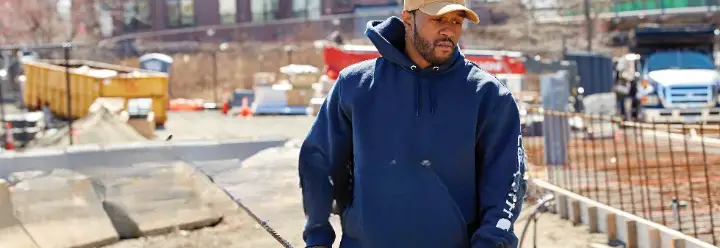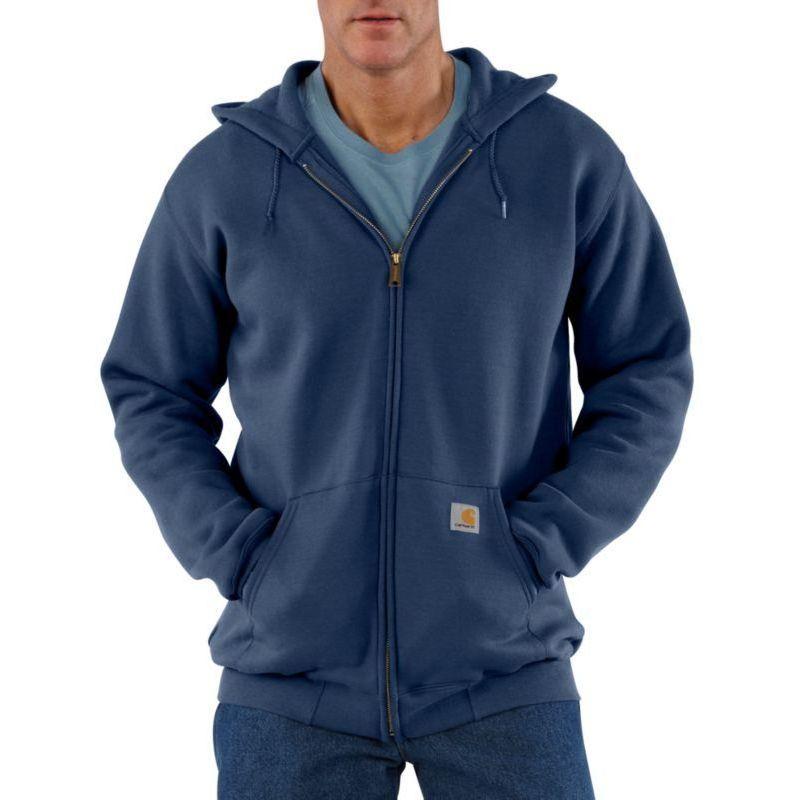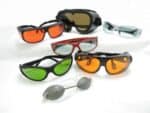Ready to uncover the mystery behind the construction worker’s go-to clothing item? Put on your hard hat and let’s explore the reasons why sweatshirts are the ultimate workwear staple! From warmth to versatility, there’s a lot more to this comfy item than meets the eye.
Discover why construction workers swear by sweatshirts, and how they help them get the job done with ease. Let’s dig in and find out why construction workers wear sweatshirts on the job site!

Why are sweatshirts a good choice for construction workers?
Construction workers often wear sweatshirts to keep warm on the job site, especially in colder weather. They also provide a layer of protection from dust and other debris that may be present on the job site.
Additionally, sweatshirts are durable and easy to move around in, which can be beneficial for the physically demanding tasks that construction workers often perform.
But let us just delve a little deeper and find out what are those desirable features that have made sweatshirts quite the hit among construction workers.
1. Warmth: Sweatshirts are made of thick, insulating material that can help keep construction workers warm on a job site, especially in colder weather.
2. Protection: Sweatshirts can provide a layer of protection from dust, debris, and other hazards that may be present on a construction site.
3. Durability: Sweatshirts are made from sturdy materials that can withstand the wear and tear of construction work. They can withstand the frequent bending, reaching and movement
4. Comfort: Sweatshirts are designed to be comfortable and easy to move around in, which can be beneficial for the physically demanding tasks that construction workers often perform.
5. Easy care: Sweatshirts are easy to wash and maintain, they can be put in the washing machine and dried in the dryer, and they can withstand industrial laundry.
6. Branding and identification: Sweatshirts can have a company logo or name embroidered on them, which allows for easy identification of workers on the job site.
7. Cost-effective: Sweatshirts are relatively inexpensive, especially when bought in bulk, making them a cost-effective option for construction companies to provide to their workers.
Now that we know sweatshirts are indeed a good choice of topwear for construction workers, let us look into the specifics to see how they should fit, feel and should be cared for.

What material sweatshirts should be used by construction workers
Construction workers often wear sweatshirts made from cotton or cotton blends. Cotton is a durable and breathable fabric that can withstand the wear and tear of construction work and keep the worker comfortable.
Cotton blend sweatshirts, such as those made with polyester or spandex, can also be a good choice for construction workers.
Polyester is a synthetic fabric that is strong and resistant to shrinkage, fading, and wrinkles, which makes it a durable choice for construction work.
Spandex is a stretchy fabric that can add flexibility and ease of movement to the sweatshirt, which can be beneficial for construction workers who need to move around and perform physically demanding tasks.
Another option is sweatshirts made from flame-resistant materials, such as Nomex or PBI, which are designed to provide additional protection for workers in environments where there is a risk of fire.
It’s important to note that the material of the sweatshirts should also be compliant with OSHA regulations and industry standards, and meet the necessary safety requirements.
How should sweatshirts fit in case of construction workers
When it comes to the fit of sweatshirts for construction workers, a slightly loose fit is generally best.
A loose fit allows for ease of movement and flexibility, which is important for construction workers who need to move around and perform physically demanding tasks. Loose fit also allows for layering underneath to keep the worker warm in cold weather.
It’s also important to ensure that the sweatshirt is not too baggy or too tight, as either can be restrictive and uncomfortable.
The sleeve length should be long enough to cover the wrists, but not too long that it gets in the way of the worker’s movements. The sweatshirt’s length should be long enough to stay tucked in and to keep the worker’s lower back covered while working.
It’s also important that the sweatshirt is comfortable to wear, with no itchy or scratchy fabrics and no seams that rub or chafe.
Overall, the fit should be comfortable, allowing the worker to move easily and perform their job without being constricted or uncomfortable.
Should it be a pullover sweatshirt or a zipper one?
Both pullover and zipper sweatshirts can be suitable for construction workers, depending on the worker’s preference and the job requirements.
Pullover sweatshirts are easy to put on and take off and can be a good choice for workers who want a simple, no-fuss option. They are usually made of a thicker material and can be worn as an outer layer in mild weather.

Zipper sweatshirts, on the other hand, can be a good choice for workers who want more versatility in their clothing. They can be easily opened or closed to adjust for temperature changes and can be worn as a layering piece.
They also offer easy access to the chest area if the worker needs to wear a harness, which is a common requirement in some construction jobs.
It’s important to note that both types of sweatshirts should be made of durable, high-quality materials and have a comfortable fit that allows for ease of movement and flexibility.
In summary, both pullover and zipper sweatshirts can be suitable for construction workers, depending on the worker’s preference, job requirements and weather conditions.
Should the sweatshirt have a hoodie
Whether or not a sweatshirt should have a hoodie for a construction worker depends on the job requirements and the worker’s preference.
A hooded sweatshirt can provide additional warmth and protection for the head and neck, which can be beneficial in cold or wet weather conditions. The hood can also help keep out dust and debris and offer some protection from the sun.
However, a hooded sweatshirt may not be the best choice for all construction workers. For example, if the worker is required to wear a hard hat or a safety helmet, the hood may not fit comfortably or may be in the way.
Also, if the worker is performing a task that requires them to move their head frequently or if the hoodie is too tight it can be restrictive and uncomfortable.
In summary, whether or not a sweatshirt should have a hoodie for a construction worker depends on the job requirements, worker’s preference and the working environment.
How can sweatshirts be worn by construction workers
Construction workers can wear sweatshirts in a variety of ways, depending on the job requirements and the weather conditions. Here are a few examples:
1. As an outer layer: In mild weather, construction workers can wear a sweatshirt as an outer layer to keep warm and protect against dust and debris.
2. As a layering piece: In colder weather, construction workers can wear a sweatshirt as a layering piece under a jacket or coat for added warmth.
3. With safety gear: If the job requires a hard hat or safety helmet, construction workers can wear a sweatshirt over their safety gear to keep warm and protect against dust and debris.
4. With other workwear: Construction workers can also wear a sweatshirt with other workwear such as pants, boots and gloves to provide additional protection and warmth.
5. Safety compliant: Sweatshirts should be worn in accordance with OSHA regulations and industry standards, and meet the necessary safety requirements.
It’s important to note that construction workers should wear the appropriate clothing for the job and the weather conditions, and that the sweatshirt should be comfortable and easy to move around in.
The worker should also be able to move around freely and perform their job without being constricted or uncomfortable.
Specific features construction workers should look for while buying sweatshirts
Construction workers should look for specific features when buying sweatshirts to ensure they are appropriate for their job and comfortable to wear. Here are a few features to consider:
1. Durability: Look for sweatshirts made from sturdy materials that can withstand the wear and tear of construction work, such as cotton or cotton blends.
2. Safety compliance: Look for sweatshirts that are compliant with OSHA regulations and industry standards, and that meet the necessary safety requirements. This includes sweatshirts that are flame resistant if necessary.
3. Comfort: Look for sweatshirts that are comfortable to wear, with no itchy or scratchy fabrics and no seams that rub or chafe.
4. Fit: Look for sweatshirts that have a slightly loose fit to allow for ease of movement and flexibility, and that are not too baggy or too tight.
5. Easy care: Look for sweatshirts that are easy to wash and maintain, and that can withstand industrial laundry.
6. Branding and identification: Look for sweatshirts that can have a company logo or name embroidered on them, which allows for easy identification of workers on the job site.
7. Weather protection: Look for sweatshirts that can provide additional warmth or protection from the elements, such as a hoodie for cold weather or a material that is water resistant for wet weather.
8. Safety features: Look for sweatshirts that have safety features such as reflective tape, high visibility colors or features that allow for easy access to the chest area if the worker needs to wear a harness
By taking these features into consideration, construction workers can ensure that they are buying sweatshirts that are appropriate for their job, comfortable to wear and will last for a long time.
What type of sweatshirts are easy to clean
Sweatshirts that are easy to clean are typically made from synthetic materials, such as polyester or nylon, or blended fabrics that include these materials.
These types of fabrics are resistant to shrinking and fading and can be washed and dried using standard laundry care.
Another option for easy care sweatshirts are those that are treated with a stain-resistant or soil-release finish. These sweatshirts are designed to resist stains and dirt, which makes them easier to clean and maintain.
It’s important to check the care label on the sweatshirt before buying it, to ensure that it is machine washable and can be dried in the dryer. It’s also important to follow the care instructions on the label when washing the sweatshirt to ensure that it lasts for a long time.
It’s also important to note that in industrial laundries, sweatshirts are often washed and dried at high temperatures and with strong detergents to remove dirt, stains, and odors.
Therefore, the more durable, the more resistant to shrinking and fading the sweatshirts are, the better they will hold up in industrial laundries.
In summary, sweatshirts made from synthetic materials or blended fabrics, or treated with a stain-resistant or soil-release finish are generally considered easy to clean and maintain.
Laundry tips to take care of the sweatshirts
1. Follow the care instructions on the label: Always check the care label on the sweatshirt before washing it to ensure that you are using the right temperature and detergent.
2. Use a mild detergent: Use a mild detergent to wash the sweatshirt to avoid damage to the fabric. Avoid using bleach or fabric softener, as they can damage or weaken the fabric over time.
Use the right water temperature: Use the water temperature recommended on the care label. Hot water can shrink and damage certain fabrics, while cold water can be less effective at removing dirt and stains.
3. Consider the color: Be mindful of the color of the sweatshirt and wash it separately from other clothes to prevent color bleeding.
4. Don’t overstuff the washer: Make sure to not overstuff the washer when washing the sweatshirt to allow for proper agitation and cleaning.
5. Dry it properly: After washing the sweatshirt, it’s best to tumble dry it on low heat, or hang it up to dry if the care label advises against machine drying. Avoid over-drying the sweatshirt, as it can shrink and damage the fabric.
6. Iron if needed: If the sweatshirt needs ironing, use a warm iron and avoid ironing over any printed or embroidered designs.
7. Repair any damage: If the sweatshirt has any holes or tears, repair them before washing to prevent further damage.
By following these laundry tips, you can help ensure that your sweatshirts stay in good condition and last for a long time.
In conclusion, sweatshirts are a versatile and essential item for construction workers. From providing warmth in cold weather to protecting from dust and debris, sweatshirts are designed to make the job easier and more comfortable.
And let’s not forget about the style factor – sweatshirts come in a range of colors and designs, allowing construction workers to express their personality on the job site. So next time you see a construction worker in a sweatshirt, remember, it’s not just a casual item, it’s a workwear essential!
And that’s about sweatshirts, the secret weapon of construction workers – making hard work, a little bit softer!
Product links
1. Carhartt Men’s Loose Fit Midweight Logo Sleeve Graphic Sweatshirt
Available in a wide variety of colors, this stylish and comfy sweatshirt will protect you from the attack of elements and would keep you warm, happy and stylish all day long.
2. Gildan Adult Fleece Zip Hooded Sweatshirt
Style that comes with some extra protection. Be it day or night a construction worker who is out there in the busy world needs to make sure he is protected by some high vis vests.
But what if the vest was a soft and comfy sweatshirt, that’s exactly what we have for you right here. Don the neons with style and comfort.









